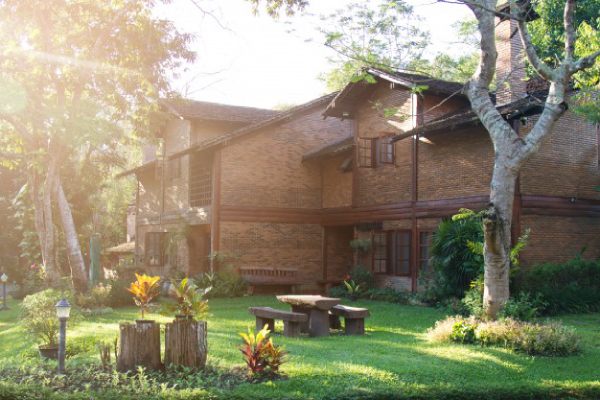Rent in ordinary terms can be understood as the periodical payment made by the tenant for the use, occupancy and possession of any immovable property either land or land and building both. The part of this rent is a return on the investment made in the property by the owner. While the second part forms the outgoings like repairs, taxes, insurance etc.

Also Read: Tips for Getting Your Property Ready to Rent
Rent Control Act
The Rent control act was brought into force to protect the old tenants, who had been living in houses since years from possible evacuation by the landlord or overcharging of rent, mainly because of the shortage of houses during that era. The rent control act regulates the renting of the properties and protects the interest of both, tenants as well as the landlord.

However, in India, this act has more or less favored and protected the tenants to the extent that due to the over protection, its ill effects are now seen in form of old dilapidated buildings and hardly any stock of rental housing nationwide.
Standard Rent

This is applicable mainly in India. The Rent Control Act, in India, prohibits the owner to charge excess rent than as prescribed under the law irrespective of prevailing market rent. The standard rent is the rent, which would be permissible under the law to be charged to a tenant. The rent Act applies to premises let for residence, education, business, trades, storage, etc. Rent more than certain rent, even though the free market may support, is not allowed under the Act.The standard rent has been defined in rent control act as the rent act is a state act, all states have definitions which may differ marginally in meaning from one state to another.
The rent as decided by the landlord and tenant at the beginning of the tenancy either by negotiations or by bargaining is known as contractual rent. Standard rent is the rent, which would be permissible under the law to be charged to a tenant. Due to this socialist law, it is observed that there is a wide gap between contractual rent / fair market rent and standard rent. As per the act, the rent at which the premises have been let out for the first time after 1st September 1940, is called the standard rent. For buildings constructed and let out after 1st September 1940, the contractual rent is the standard rent.
These provisions were incorporated in the act, to defend the poor tenants and saving them from exploitation by the landlord as there was a huge gap in supply and demand of housing. Under the provision of the rent control act, whatever may be the market conditions, whatever may be the supply and demand situation, whatever the affording tenants can pay to a landlord, the standard rent cannot be more than a certain amount, i.e. standard rent.
Who can Sue for Standard Rent?
Now, who can sue for fixing the standard rent? Normally the tenant, who feels that his current rent is too high, can approach the court or the rent commissioner for the fixation of standard rent. Similarly, if the rent is so low that then, the landlord can neither repair nor pay the taxes nor get any reasonable return, he can also approach the court for the fixation of standard rent.
However, during last 5 decades because of the socialist approach by the Government as well as the courts, the court has mostly favoured the tenants and hardly any landlord could get the proper return in terms of rent.
Hence, if there is any dispute between the landlord and tenant regarding the rent or increase in rent, then either can approach the court. If the rent is excessive, the standard rent shall be decided by the court based on the parameter prescribed below.Hence, if there is any dispute between the landlord and tenant regarding the rent or increase in rent, then either can approach the court. If the rent is excessive, the standard rent shall be decided by the court based on the parameter prescribed below.
The application for fixation of standard rent can be made, either by a single tenant or by a group of tenants.
Due to these strict provisions of rent control act, where it has almost become impossible for the landlord to get vacated from the tenant, many landlords have started the practice of not accepting rent as it was very minimal. In such cases also the tenant can approach the competent court.
Also Read:
How to Calculate Standard Rent?
A number of court cases arose thereafter, where the courts have tried to prescribe the method of calculating the standard rent.
The standard rent consists of the return to the owner for his investment in land and building plus the outgoings on the same as usual.
The principle set out by the Hon’ble Supreme court in Shanti Devi’s case that the net return on the cost of construction should be 2.5% more and on the value of land 1.5% more, as compared to the net yield on the guilt-edged security provided the land is freehold.
However, this decision also needs a review as much water has flown in the river since then and there are more attractive and lucrative forms of investment in the financial market and in which we do not suffer from the following hindrances as suffered by the rent control i.e. controlled property.
- Loss of capital due to inflationary conditions.
- No capital appreciation for a rent-controlled property.
- No easy liquidity of capital.
- Difficulty in raising loan at low expenses.
- The high cost of the transfer.
- No tax benefits.
All such factors have discouraged people for investment in rental stock of housing. However, no court has yet decided a case, where the returns have been decided based on the normal returns available in the investments in the financial market.
The Expenditures Generally Allowed by the Hon’ble Court
- Repairs
- Insurance
- Sinking Fund
- Collection and Management charges (if any).
- Municipal taxes.
- N.A. Assessment etc.
Net Return Allowed
Now, the net return allowed on the cost of construction and value of freehold land are as follows:
On the cost of construction – 6½% or as per market condition
On the value of land – 5½% or as per market condition
However, looking to the present circumstances, such as “High rate of interest in money market and the increased rate of return on investment in other sectors, many courts have allowed a net return on the cost of construction at 8 to 9% and on the value of the land at 7 to 8%.
Security Deposit:
According to the new draft Model Tenancy Act, 2019, security deposit has been capped to a maximum of two month’s rent in case of residential property and a minimum of one month’s rent in the case of non-residential property.
Repairs
Repairs are usually allowed at ½ % to 1% on the 9/10th cost of construction of a building depending upon its life, class of construction etc. For RCC framed structure its life shall be about 60 to 100 years and have one can adopt repairs at ½ % of the 9/10th cost of construction.
Sinking Fund
It is allowed at 3 to 4% basis on 9/10th of the cost of construction, for the future of the building. The expenses are adopted on 9/10th of the cost and not on the full cost of construction as after its economic life shall be over, the owner can get 10% of the cost as its scrap value i.e. from the sale of old building materials. Sinking fund at 3½% for the future life of 60 to 100 years, will be 0.11% of the 9/10th cost of construction of the building.
Effect of Rent Control Act/New Draft Act by Central Government
But nowadays, many State Governments are not strictly enforcing the act, as because of artificial constraints of a draconian act, it has discouraged people renting their property resulting in the actual shortage of housing stock. It also demotivates landlords from repairing and maintaining the old rented houses, as the return in terms of rent, is never sufficient to cover such costs. This has resulted in the big stock of poor dilapidated buildings, which are on the verge of collapse with tenants living under constant threat to life and in miserable conditions. Each monsoon takes fall of few buildings and lives.
However, nowadays central government have already circulated and suggested a Model Tendency Act to state. To be fair, to investors and owners and also simultaneously protecting old and poor tenants.



